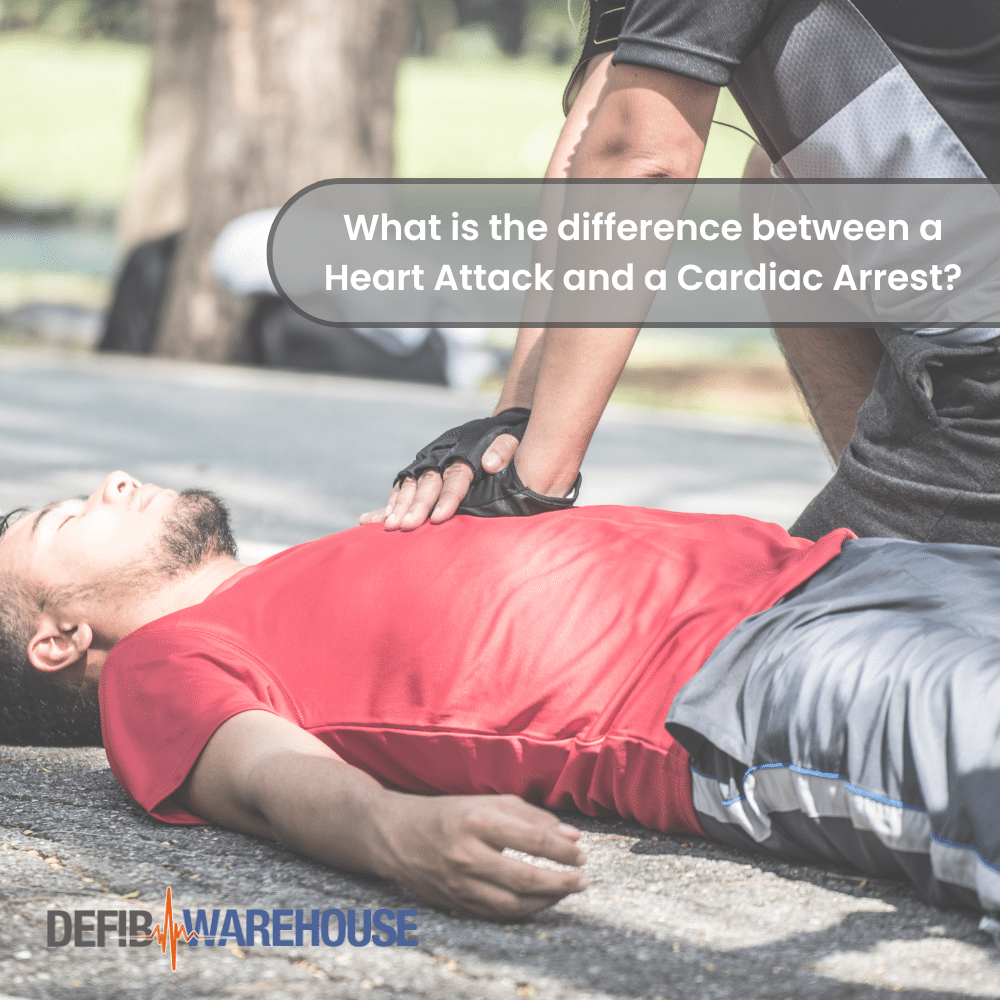The terms heart attack and cardiac arrest are often used interchangeably, even by the media, however they are both very different medical emergencies requiring different treatment.
In this blog we will discuss the difference between heart attack and cardiac arrest as well as how to respond to each condition. While both are life threatening, the actions needed in a cardiac arrest vary greatly from those needed to respond to a heart attack.
What is a heart attack?
A heart attack refers to a medical emergency in which one of the arteries in the heart becomes blocked. This prevents oxygenated blood from reaching the heart and causes the muscles in the heart to begin to die.
Someone experiencing a heart attack will be conscious, responsive and typically in a lot of pain. They may experience shooting pains down their arms and complain of shortness of breath.
When someone is suffering a heart attack, their heart is still beating, and they do not require a defibrillator.
The treatment for a heart attack can vary, but if you suspect someone around you to be suffering a heart attack, there are some steps you can take:
- Call 999 for urgent medical assistance
- Sit the casualty down in a position where they are comfortable
- If they are not allergic, advise the casualty to slowly chew and swallow 2 aspirin tablets
- Be prepared to begin CPR if the casualty becomes unconscious and send for an AED
However, a heart attack can develop into a cardiac arrest; at which point a defibrillator and CPR would be needed.
What is Sudden Cardiac Arrest?
Sudden Cardiac Arrest refers to the abrupt cessation of an effective rhythm in the heart. Someone who suffers a cardiac arrest will fall unconscious almost immediately and will not be breathing.
Immediate Cardiopulmonary Resuscitation (CPR) and a shock from a defibrillator is needed to save someone who is in cardiac arrest as their vital organs will not be receiving oxygenated blood while in cardiac arrest.
In the UK currently, less than 1 in 10 people survive a cardiac arrest outside of hospital. However, the survival rate can be as high as 74% if CPR is started and a defibrillator is used within 3 to 5 minutes of the casualty collapsing.
If you suspect a cardiac arrest in someone around you, here are some steps you should take:
- Call 999 for an ambulance
- Perform a scene survey to ensure you are not placing yourself or the casualty in further danger by helping
- Check for responsiveness by gently shaking the casualty by the shoulders and asking “Are you okay?”
- Begin CPR by starting chest compressions and send someone to fetch the nearest defibrillator (the 999 call handler can help guide you to this).
- Turn on the defibrillator once it arrives and follow the instructions given until the paramedics arrive and take over.
Difference between heart attack and cardiac arrest
The key difference between heart attack and cardiac arrest is the treatment needed for the two conditions.
While a heart attack can prove deadly if treatment is not began promptly, the nature of a sudden cardiac arrest means that the casualty requires immediate CPR and a defibrillator shock to preserve their life.
Sudden Cardiac Arrest can occur to anyone at any time, striking healthy young athletes as well as older people, whereas a heart attack is typically caused by an underlying or existing health condition such as heart disease.
Be prepared for any situation
To ensure the best possible outcome for someone suffering either a cardiac arrest or a heart attack, the best thing you can do is be prepared.
Equip those around you with the knowledge to recognise a medical emergency and the confidence to act by offering them accredited First Aid training.
As well as training, having a defibrillator nearby in a cardiac arrest situation can mean the difference between life and death. You can view Defib Warehouse’s range of trusted defibrillators here.
We are offering the Physio Control LIFEPAK CR2 on special offer this month.

